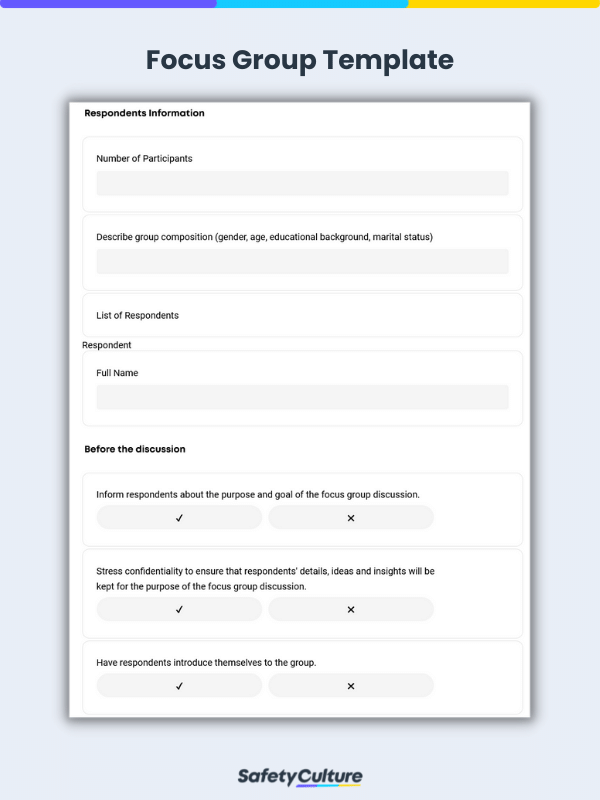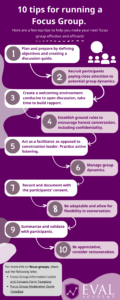Utilizing such a framework offers several advantages. It streamlines the process, saving time and resources by providing a clear path for the discussion. This structured approach minimizes the risk of missing critical information and ensures the discussion remains aligned with research goals. Furthermore, it promotes objectivity and reduces moderator bias, leading to more reliable and insightful findings. A pre-planned structure also allows for easier analysis and comparison of data across multiple focus groups.

Understanding the purpose and benefits of a structured approach to qualitative data collection lays the foundation for exploring its key components and best practices. This exploration will delve into crafting effective questions, structuring the flow of a session, and navigating potential challenges during group discussions.
Key Components of a Focus Group Discussion Guide
Effective focus group discussions rely on a well-structured guide. This ensures consistent data collection and facilitates productive conversations aligned with research objectives. Several key components contribute to a robust and effective guide.
1. Introduction and Warm-up: This section sets the stage for the discussion. It typically includes introductions, an overview of the discussion’s purpose, and ground rules for participation. Icebreaker activities can help create a comfortable and open environment.
2. Key Questions and Topics: These form the core of the discussion guide. Questions should be open-ended, encouraging participants to share their thoughts and experiences in detail. Topics should flow logically, building upon each other to explore the research subject comprehensively.
3. Probes and Follow-up Questions: These are essential for delving deeper into participant responses. Probes elicit further details and clarification, while follow-up questions explore related aspects of the topic.
4. Visual Aids and Activities: These can enhance engagement and stimulate discussion. Images, videos, or interactive exercises can provide concrete examples or scenarios for participants to consider.
5. Time Management: Allocating specific timeframes for each section ensures all key topics are covered within the allotted time. This requires careful planning and consideration of the discussion’s flow.
6. Conclusion and Wrap-up: This section provides an opportunity to summarize key findings and address any remaining questions from participants. It also allows for a formal closing and expression of gratitude for their contributions.
A well-designed guide incorporates these components to facilitate a focused and productive discussion, maximizing the value of participant insights and ensuring alignment with research goals. Each element plays a crucial role in gathering rich, qualitative data.
How to Create a Focus Group Discussion Guide
Creating a robust discussion guide is crucial for successful focus groups. A well-structured guide ensures focused conversations, maximizes participant input, and yields valuable insights aligned with research objectives. The following steps outline a structured approach to developing an effective guide.
1. Define Objectives: Clearly articulate the research goals and the specific information sought from the focus group. This clarity informs question development and ensures the discussion remains aligned with overall research objectives.
2. Identify Target Audience: Understanding the characteristics and perspectives of the target audience is essential for tailoring questions and creating a comfortable environment. This ensures relevance and encourages open communication.
3. Develop Key Questions: Craft open-ended questions that encourage participants to share detailed experiences and perspectives. Questions should be clear, concise, and focused on the research objectives.
4. Structure the Flow: Organize questions and topics logically, creating a natural progression that facilitates in-depth exploration. A well-structured flow ensures all key areas are covered and promotes a smooth, engaging discussion.
5. Incorporate Probes and Follow-ups: Prepare probing questions to delve deeper into participant responses and uncover underlying motivations. Follow-up questions explore related aspects, enriching the data gathered.
6. Plan Activities and Visual Aids: Consider incorporating visual aids or interactive activities to enhance engagement and stimulate discussion. These can provide concrete examples or scenarios for participants to consider.
7. Allocate Time: Estimate the time required for each section of the guide to ensure efficient use of the session. This helps maintain focus and ensures all key topics are addressed within the allocated time.
8. Pilot Test and Refine: Conduct a pilot test of the guide to identify any areas for improvement. This allows for refinement and ensures the guide’s effectiveness in eliciting valuable insights.
A systematic approach to development results in a structured framework for gathering rich qualitative data. Careful planning, targeted questioning, and a logical flow ensure the focus group discussion achieves its research objectives and provides valuable insights.
Effective data collection through focus groups relies heavily on well-structured discussion guides. These guides serve as roadmaps for moderators, ensuring discussions remain focused, productive, and aligned with research objectives. A carefully crafted guide facilitates comprehensive exploration of key topics, encouraging valuable insights from participants. Key components, such as clearly defined objectives, targeted questions, logical flow, and strategic use of probes and follow-up questions, contribute significantly to the effectiveness of these guides. Furthermore, incorporating visual aids and interactive activities can enhance engagement and stimulate richer discussions. Pilot testing and refinement are crucial steps in ensuring the guide’s efficacy and maximizing the value of gathered data.
Leveraging a structured approach to discussion guide development empowers researchers to gather rich, qualitative data that provides deep understanding of target audiences and informs strategic decision-making. The thoughtful application of these principles contributes to more meaningful and impactful research outcomes.



